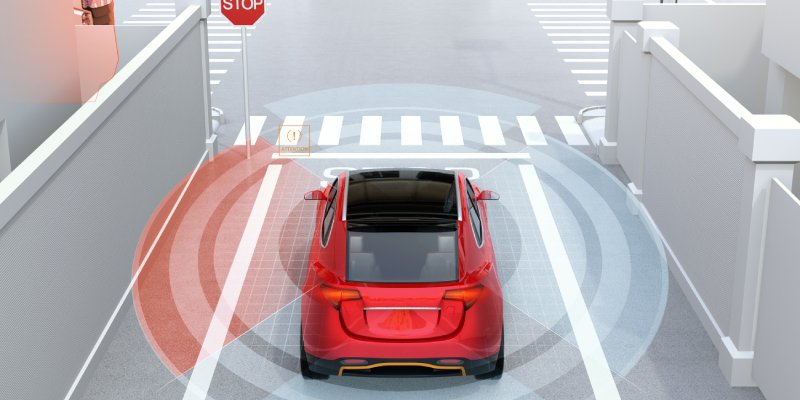There is a lot of hype around ADAS, or Advanced Driver Assistance Systems, and its implementation in the Indian market. With a growing need to focus on safety, Sid Jalan explores this new technology’s challenges implementation
India has a dismal record when it comes to road safety, with nearly 500-700 people dying every day on Indian roads. To their credit, the government and concerned bodies have taken active steps to increase safety, with clear signage, access-controlled expressways, monitoring systems, vehicle tracking systems, and accountability for contractors.
However, manufacturers are also understanding the role they need to play in the goal of increasing road safety. This is where ADAS comes in, with various vehicle manufacturers allocating resources to its development and deployment.
What is ADAS?
ADAS is a system that senses the vehicle’s environment and provides information to the driver that can help them prevent an accident or collision. It’s a safety mechanism that can reduce injuries or mortality. The simplest form of ADAS is your rear collision warning, which sends an alert when you’re about to collide with something behind while reversing.
The aim of ADAS is to assist the driver and improve driver performance. It works through different types of sensors that can process information in real time and deliver an accurate output in the form of alerts or actions. Radar, LiDAR, Ultrasound, Dash Cameras, etc., are used to create a virtual environment around your vehicle and assist the driver.
The system architecture consists of sensors, actuators, connectivity devices, software algorithms and processors, that can merge data and make instantaneous decisions. Studies have shown that ADAS systems, which combine rear automatic braking, rear-view camera and parking sensors, can reduce backing crashes by 78%. A forward collision warning can reduce crashes by 27%. These make a compelling argument for the wider adoption of ADAS.
What are the types of ADAS technologies?
ADAS can be either passive or active in nature. ADAS Passive systems warn the driver of an impending problem, with a dependence on the driver to take action. This is in the form of an alert that includes sounds, lights or even haptic feedback on the steering wheel.
The other type is Active systems, where technology can take action beyond a simple warning. In Active systems, data is processed and action is provided such as braking or steering. These do not rely on human intervention and can expedite the reaction time.
A few of the ADAS technologies currently seen:
- Parking Assist
- Surround View
- Rear, Front or Side Collision Warning
- Lane Departure Warning
- Lane Keeping Assist
- Blind Spot Detection
- Adaptive Cruise Control
- Pedestrian Detection
- Tyre Pressure Warning
- Driver State Detection (including Gaze Detection)
- Traffic Sign Detection
- Self-Parking
- Automatic Emergency Braking
As you can see, some of these ADAS technologies are common features in most cars. They are also being deployed in commercial vehicles, which have seen higher incidents of driver fatigue and human error.
What are the challenges?
Although there is great potential for this technology, wider adoption & deployment has some concerns to overcome.
- Over-reliance on assistive driving can lead to weakened driver input and potential accidents.
- Standardisation and regulations might be necessary for consistency between manufacturers. However, this might be detrimental to innovation and requires open discussion.
- There are limitations to the current technology which has not reached complete accuracy, thereby requiring human intervention.
- Infrastructure has to match the ADAS requirements for seamless adoption. Lane departure can only work with clear lane markings.
- Constant alerts can end up being ignored by drivers, negating the whole reason for ADAS.
What is the future ?
The potential for ADAS is vast and quickly developing. The global ADAS and autonomous driving components market is projected to reach USD 118.03 billion by 2027. Research on newer assistive technology is opening the door for higher ADAS adoption, which is no longer relegated to luxury vehicles.
Increased reliability of the different systems is key to opening up the market, which requires enhanced sensors and further integration with Artificial Intelligence (AI) for data processing. While machines can process data faster than humans, the lag time can be further reduced to offer true real time control. This will be important for autonomous driving.
Although V2V (Vehicle to Vehicle) and V2I (Vehicle to Infrastructure) are already being tested, these technologies can be unlocked through ADAS. Connected vehicle technology can transmit data between vehicles and between monitoring infrastructure, providing immediate information on traffic, routes, lane departure, etc.
The main potential for ADAS systems lies in complete self-driving. Fully autonomous vehicles are able to distinguish between their environment and operate without any human involvement. A higher focus on the tech architecture will be important to achieve this. Fully autonomous vehicles can drastically reduce human error, lead to fewer accidents, and provide better traffic management systems.
ADAS is marketed by different manufacturers under different names, but they’ve been around for many years. As countries start to mandate ADAS and other safety features, it might not be prudent to expect more innovation in these systems, wherein we can imagine a world without any vehicle collisions.
 TrafficInfraTech Magazine Linking People Places & Progress
TrafficInfraTech Magazine Linking People Places & Progress
